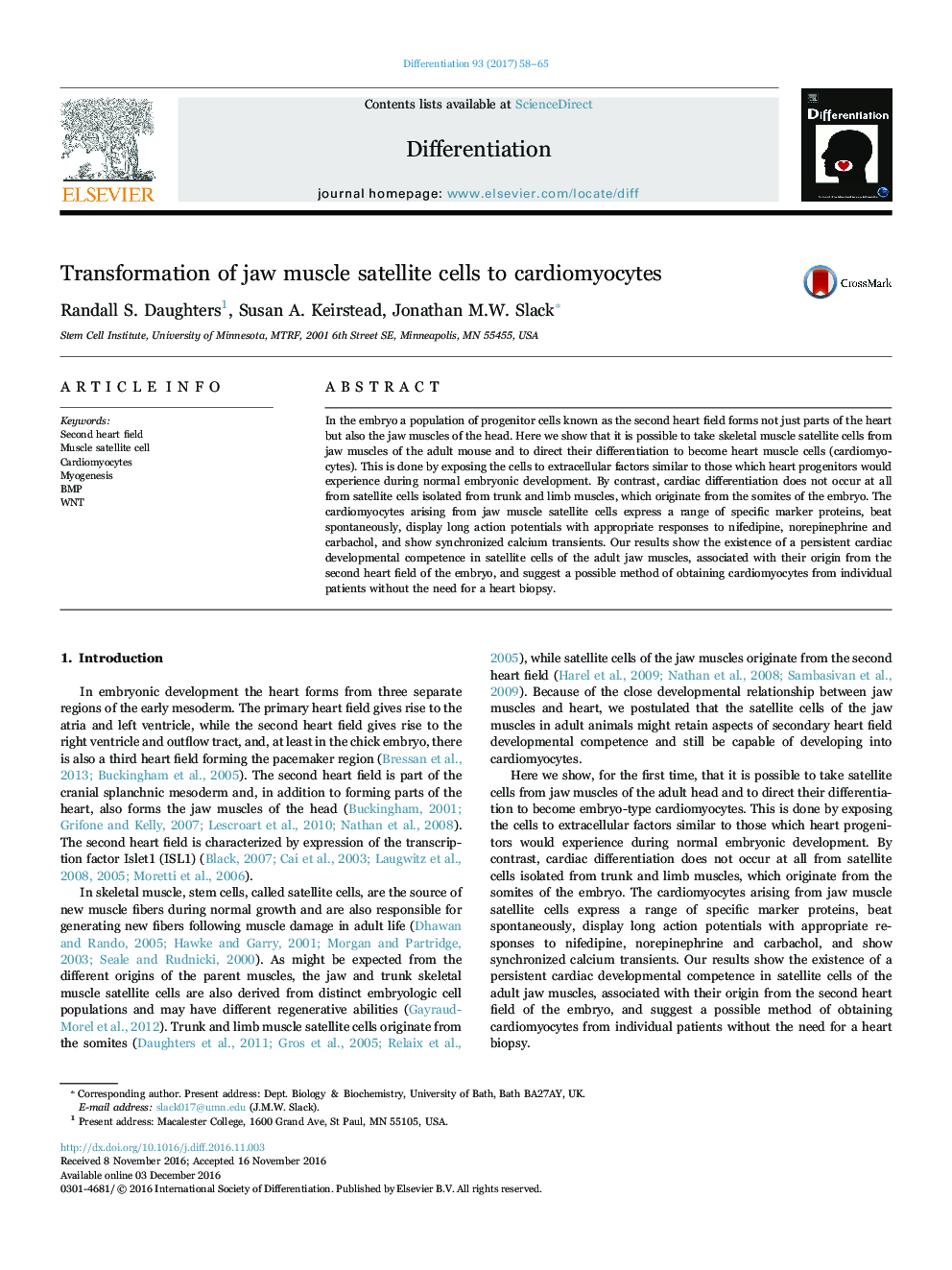| Article ID | Journal | Published Year | Pages | File Type |
|---|---|---|---|---|
| 5526128 | Differentiation | 2017 | 8 Pages |
In the embryo a population of progenitor cells known as the second heart field forms not just parts of the heart but also the jaw muscles of the head. Here we show that it is possible to take skeletal muscle satellite cells from jaw muscles of the adult mouse and to direct their differentiation to become heart muscle cells (cardiomyocytes). This is done by exposing the cells to extracellular factors similar to those which heart progenitors would experience during normal embryonic development. By contrast, cardiac differentiation does not occur at all from satellite cells isolated from trunk and limb muscles, which originate from the somites of the embryo. The cardiomyocytes arising from jaw muscle satellite cells express a range of specific marker proteins, beat spontaneously, display long action potentials with appropriate responses to nifedipine, norepinephrine and carbachol, and show synchronized calcium transients. Our results show the existence of a persistent cardiac developmental competence in satellite cells of the adult jaw muscles, associated with their origin from the second heart field of the embryo, and suggest a possible method of obtaining cardiomyocytes from individual patients without the need for a heart biopsy.
Graphical abstractDownload high-res image (112KB)Download full-size image
